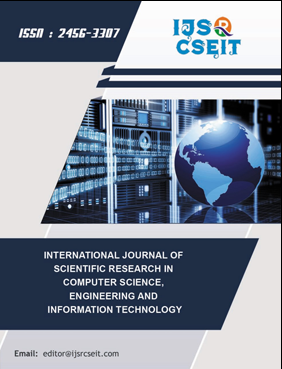Unsupervised Machine Learning for Managing Safety Accidents in Railway Stations
Keywords:
Latent Dirichlet Allocation, RSSB, AI-Driven SafetyAbstract
Railway operations, both for passengers and freight, hinge on reliability, accessibility, maintenance, and safety (RAMS). Particularly in urban areas, the risk of safety accidents at railway stations poses a significant concern for daily operations. These accidents not only damage the reputation of the market but also result in injuries, anxiety among the public, and financial costs. With stations facing increased pressure due to higher demand, there's a greater strain on infrastructure and heightened considerations for safety administration. To address this challenge, it's proposed to leverage unsupervised topic modeling, specifically optimizing Latent Dirichlet Allocation (LDA), to better understand the factors contributing to severe accidents. By analyzing textual data from 1000 accidents at UK railway stations gathered by RSSB, this research aims to systematically identify accident characteristics using machine learning topic modeling techniques. The goal is to enhance safety and risk management by gaining insights into accident causes and identifying hotspots in stations. This approach allows for advanced analysis of accident history, lessons learned, and a deeper understanding of risk factors associated with fatalities. The study evaluates the effectiveness of this text mining approach in extracting valuable accident information, such as root causes and hotspots, with predictive accuracy. By leveraging big data analytics, it offers a comprehensive understanding of accident nature that goes beyond traditional narrow domain analysis of accident reports. This technology stands to Significantly improve safety in the railway industry and holds promise for applications in other safety-critical fields, ushering in a new era of AI-driven safety applications.
📊 Article Downloads
References
H. Alawad, S. Kaewunruen and M. An, "Learning From Accidents: Machine Learning for Safety at Railway Stations," in IEEE Access, vol. 8, pp. 633-648, 2020, doi: 10.1109/ACCESS.2019.2962072.
Y. Baviskar, U. Suryawanshi and A. Sheikh, "Modelling of Track Layout for Intelligent Railway Signalling System: A Machine Learning Application," 2018 IEEE 4th Southern Power Electronics Conference (SPEC), Singapore, 2018, pp. 1-6, doi: 10.1109/SPEC.2018.8635878.
E. Bikov, P. Boyko, E. Sokolov and D. Yarotsky, "Railway Incident Ranking with Machine Learning," 2017 16th IEEE International Conference on Machine Learning and Applications (ICMLA), Cancun, Mexico, 2017, pp. 601-606, doi:10.1109/ICMLA.2017.00-95.
S. M. Asad, K. Dashtipour, S. Hussain, Q. H. Abbasi and M. A. Imran, "Travelers-Tracing and Mobility Profiling Using Machine Learning in Railway Systems," 2020 International Conference on UK-China Emerging Technologies (UCET), Glasgow, UK, 2020, pp. 1-4, doi: 10.1109/UCET51115.2020.9205456.
G. Singh, P. Kumar, R. K. Mishra, S. Sharma and K. Singh, "Security System for Railway Crossings using Machine Learning," 2020 2nd International Conference on Advances in Computing, Communication Control and Networking (ICACCCN), Greater Noida, India, 2020, pp. 135-139, doi: 10.1109/ICACCCN51052.2020.9362976.
N. Nenonen, "Analysing factors related to slipping, stumbling, and falling accidents at work: Application of data mining methods to Finnish occupational accidents and diseases statistics database," Appl. Ergonom., vol. 44, no. 2, pp. 215–224, Mar. 2013, doi: 10.1016/j.apergo.2012.07.001.
A. Verma, S. D. Khan, J. Maiti, and O. B. Krishna, "Identifying patterns of safety related incidents in a steel plant using association rule mining of incident investigation reports," Saf. Sci., vol. 70, pp. 89–98, Dec. 2014, doi: 10.1016/j.ssci.2014.05.007.
T. Bechor and B. Jung, "Current state and modeling of research topics in cybersecurity and data science," Syst. Cybern. Inf., vol. 17, no. 1, pp. 129–156, 2019.
J. Li, J. Wang, N. Xu, Y. Hu, and C. Cui, "Importance degree research of safety risk management processes of urban rail transit based on text mining method," Information, vol. 9, no. 2, p. 26, Jan. 2018, doi: 10.3390/info9020026.
C. van Gulijk, P. Hughes, and M. Figueres- Esteban, "The potential of ontologies for safety and risk analysis," in Proc. 26th Eur. Saf. Rel. Conf. (ESREL), 2017, p. 210, doi:10.1201/9781315374987-197.
X. Zhang, E. Green, M. Chen, and R. R. Souleyrette, "Identifying secondary crashes using text mining techniques," J. Transp. Saf. Secur., vol. 12, no. 10, pp. 1338–1358, Nov. 2020, doi: 10.1080/19439962.2019.1597795.
H. Hadj-Mabrouk, "Analysis and prediction of railway accident risks using machine learning," AIMS Electron. Electr. Eng., vol. 4, no. 1, pp. 19–46, 2020, doi: 10.3934/ElectrEng.2020.1.19.
D. E. Brown, "Text mining the contributors to rail accidents," IEEE Trans. Intell. Transp. Syst., vol. 17, no. 2, pp. 346–355, Feb. 2016, doi: 10.1109/TITS.2015.2472580.
Downloads
Published
Issue
Section
License
Copyright (c) 2024 International Journal of Scientific Research in Computer Science, Engineering and Information Technology

This work is licensed under a Creative Commons Attribution 4.0 International License.




